Goya and Origami
- mcohe7
- Sep 16
- 2 min read

Zaragoza is in the central plains of Spain and was a crossroads from ancient times for Romans, Muslims, Jews, and Christians. The Pilar Cathedral is a famous pilgrimage site that houses a Goya fresco. Francisco Goya was born nearby, trained in the city, and has numerous works here. I am a big fan and the only disappointment was that the Goya Museum is undergoing renovation so we were not able to see the collection. We stayed at the Hotel Goya where every possible inch of space had a reproduction of one of his many works.
Medieval and Gothic towers and churches and a bustling city that hosted the Worlds Fair in 2008.
Remnant of Roman walls and a Roman arena
The Aljaferia Palace describes itself as Alhambraist. The Alhambra is in Granada and is the finest example of Islamic art in Spain. This one is much smaller but is also quite beautifully restored. It was built in the 11th century and was residence of the Arab Banu Hud dynasty. To our great surpise we found some of the work from the Goya Museum installed there during the renovation of the museum.
Left to Right: Merry Folly (etching) 1814, Woman in a Black Mantilla (oil) 1824, Duke of San Carlos (oil) 1815, The Letter with Blood Enters (oil) 1780. This is just a sampling of
what they exhibited. There is some evidence that the last one may have been a study for some of the figures in the fresco in the Pilar Cathedral.

Goya received the commission for this fresco on the ceiling of the Pilar Cathedral in 1771. “Adoration of the Name of God” includes numerous pyramidal/triangular configurations of figures and an actual triangle containing the name of God in Hebrew. It is considered one of Goya’s first major commissions.
For something completed different we visited the Origami school and museum. The 2008 World’s Fair included a display of origami installation the Japanese pavilion that had a profound affect on Spanish artists and spawned an international movement.
All made of folded paper including the dresses.
The classroom and flags of all nations.
On the way to our next destination we stopped in Tudela to see what we could learn about the once thriving Jewish community and Benjamin of Tudela. The door of the church in the center is painted all around in trompe l’oeil columns and masonry.
Benjamin of Tudela was a Jewish writer and traveler in the 12th century who traveled through Europe, Asia, and Africa and wrote about it 100 years before Marco Polo. With his broader education education and knowledge of languages he was a major figure in Medieval geography and Jewish history. What we thought might be a sukkah set up in the center of Plaza Juderia was actually part of a display of ancient Roman dwellings.



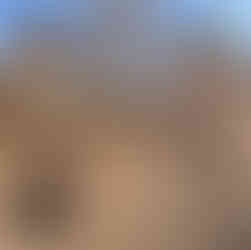


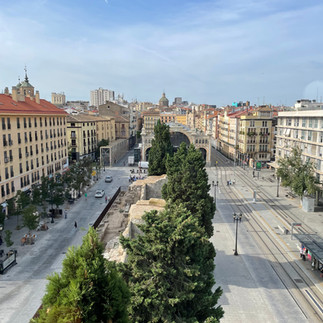


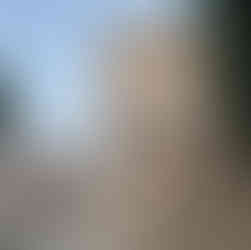



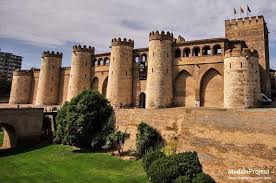
















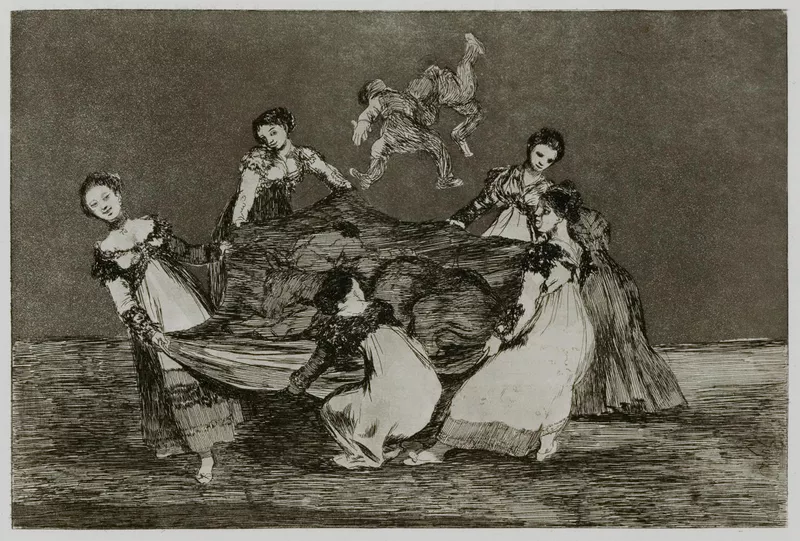
































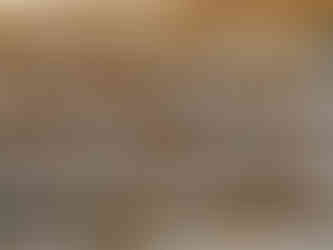



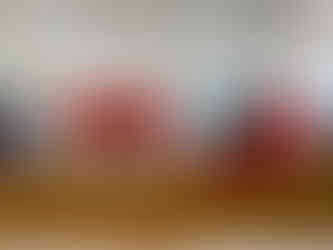


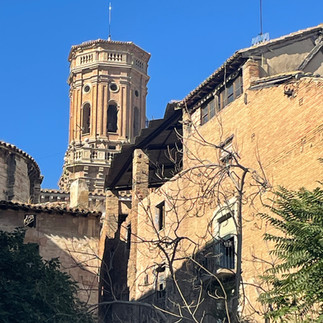













Comments